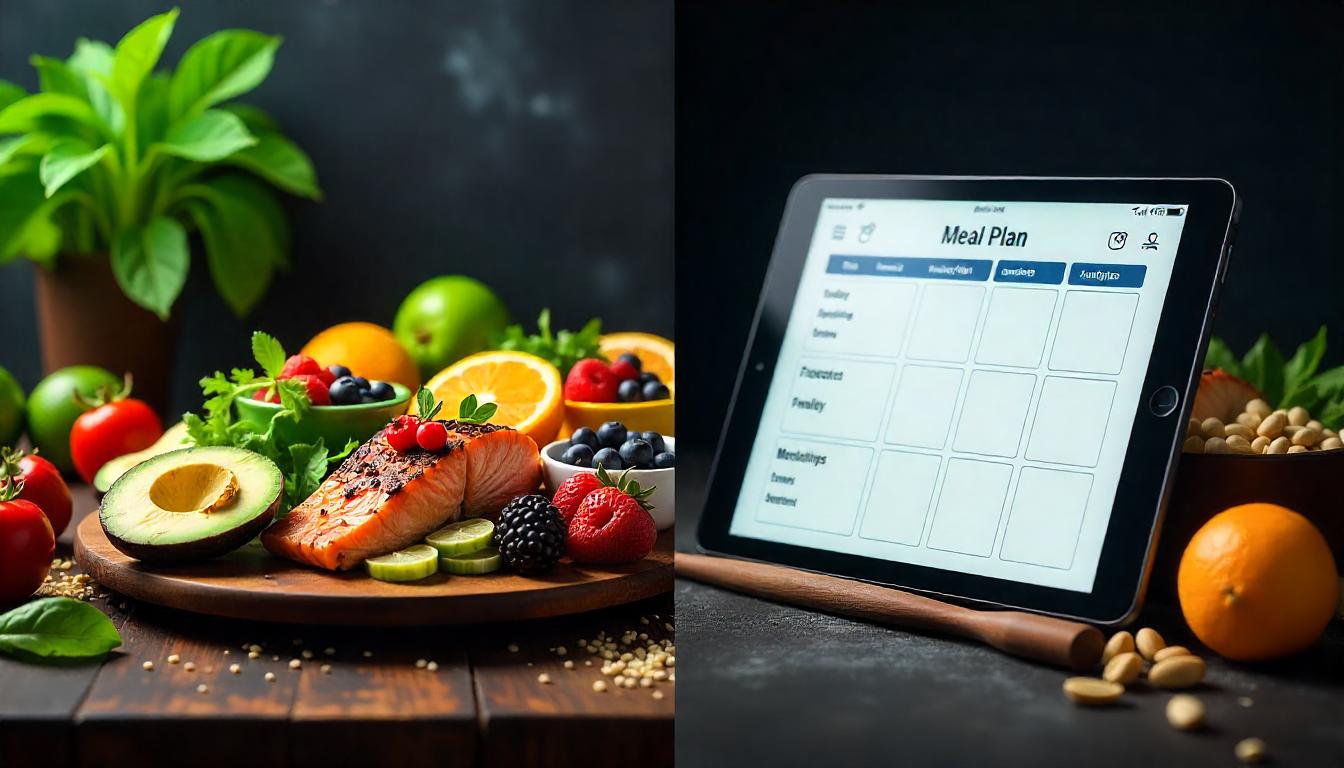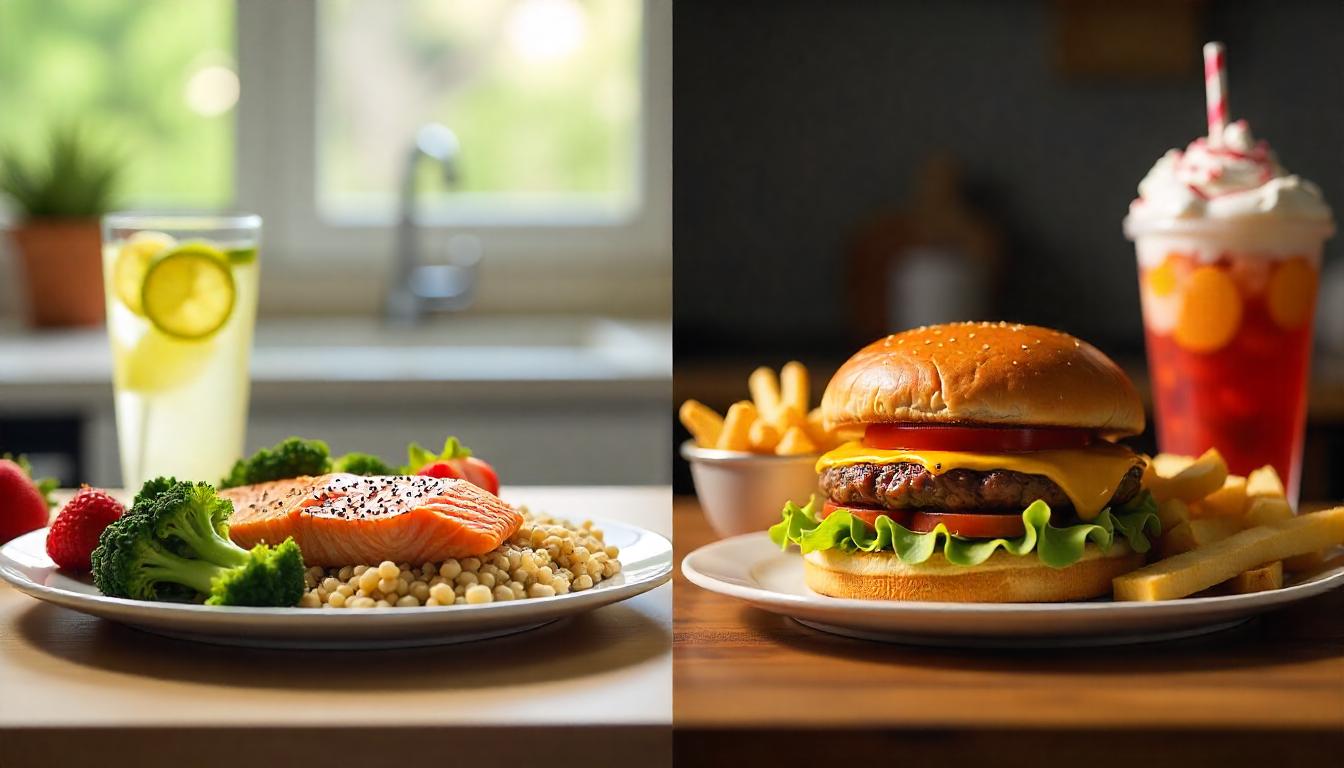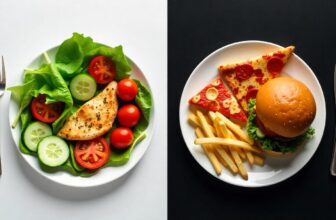Balanced Diet Meal Plan for Weight Loss: Vibrant Success Guide 2025
Introduction: Unlock Your Ultimate Transformation
Balanced diet meal plan for weight loss is more than just a trendy phrase—it’s your roadmap to a healthier, more energetic life in 2025. Imagine waking up every day feeling vibrant, knowing that your meals fuel both your body and your goals. In this guide, you’ll discover a comprehensive, step-by-step plan that harnesses the power of balanced nutrition to help you shed unwanted pounds while enjoying every bite. Whether you’re new to healthy eating or looking for fresh ideas to boost your current routine, this article is designed to inspire you with actionable tips, expert insights, and a sample meal plan that works.
Why a Balanced Diet Matters for Weight Loss
A balanced diet meal plan for weight loss focuses on eating the right mix of macronutrients—proteins, carbohydrates, and fats—along with vitamins and minerals that support overall wellness. Unlike fad diets that eliminate entire food groups, a balanced approach ensures you get the energy you need to stay active and focused throughout the day. Here’s why it matters:
- Sustainable Energy: By including complex carbohydrates and lean proteins, your body enjoys a slow and steady release of energy, preventing the dreaded mid-afternoon slump.
- Nutrient Density: A balanced diet is rich in vitamins and minerals essential for immune support, metabolism, and muscle repair.
- Portion Control: Combining high-fiber foods with healthy fats and proteins naturally curbs hunger, reducing the temptation for unhealthy snacks.
- Holistic Well-Being: It’s not just about weight loss—the balanced approach improves digestion, mood, and overall health.
Core Principles of a Balanced Diet Meal Plan for Weight Loss
Building a balanced diet meal plan for weight loss begins with understanding the basics of nutrition. Let’s break down the key components:
1. Lean Proteins
Proteins are the building blocks of muscle. Include sources such as chicken, turkey, fish, tofu, legumes, and low-fat dairy in every meal. Protein helps preserve muscle mass while you lose weight and promotes satiety, so you’re less likely to overeat later.
2. Complex Carbohydrates
Instead of refined sugars and white bread, opt for whole grains like brown rice, quinoa, and whole-wheat pasta. Complex carbohydrates provide sustained energy and are typically higher in fiber, which keeps you full and aids in digestion.
3. Healthy Fats
Incorporate unsaturated fats found in avocado, nuts, seeds, and olive oil. These fats are essential for hormone production and help your body absorb fat-soluble vitamins without the negative effects of saturated fats.
4. Abundant Fruits and Vegetables
A wide variety of colorful fruits and vegetables not only adds flavor and texture but also provides antioxidants, fiber, and essential vitamins. Aim for at least five servings a day to ensure your body gets the nutrients it needs.
5. Hydration
Never underestimate the power of water. Staying hydrated is crucial for metabolism and helps maintain energy levels. Consider adding herbal teas or infusing water with fruits for extra flavor without added sugars.
Meal Planning Tips to Kick-Start Your Journey
To successfully implement your balanced diet meal plan for weight loss, planning is key. Here are some expert-approved tips to get you started:
Plan Ahead and Prep
- Weekly Meal Prep: Dedicate a few hours each week to planning and preparing meals. Pre-chopped vegetables, cooked grains, and marinated proteins can save time on busy days.
- Create a Shopping List: Based on your meal plan, write down all the necessary ingredients. Stick to the list to avoid impulse purchases that could derail your progress.
Portion Control Strategies
- Use Smaller Plates: This simple trick can help you control portions and avoid overeating.
- Measure Ingredients: Invest in a food scale or measuring cups to ensure your portions are accurate.
Incorporate Variety and Flexibility
- Rotate Your Meals: Prevent boredom by switching up recipes and ingredients. A diverse diet not only maintains your interest but also provides a broader range of nutrients.
- Listen to Your Body: Adjust portion sizes and meal timing based on your hunger cues and energy needs.
Embrace Mindful Eating
- Chew Slowly: Take time to savor each bite. This practice can help you recognize when you’re full, reducing the risk of overeating.
- Eliminate Distractions: Try to eat without the interference of screens or work to fully engage with your meal and appreciate its flavors.

Sample 7-Day Meal Plan
Below is a sample week-long balanced diet meal plan for weight loss that you can customize according to your taste and nutritional needs. This plan is designed to be nutritionally complete, delicious, and easy to follow.
Day 1: Energize Your Morning
Breakfast:
- Greek yogurt parfait with mixed berries, a sprinkle of granola, and a drizzle of honey.
- A slice of whole-grain toast topped with avocado and a poached egg.
Mid-Morning Snack:
- A small apple with a handful of almonds.
Lunch:
- Grilled chicken salad with mixed greens, cherry tomatoes, cucumbers, and a light vinaigrette dressing.
- Quinoa on the side for extra fiber.
Afternoon Snack:
- Carrot sticks with hummus.
Dinner:
- Baked salmon with lemon, served with steamed broccoli and brown rice.
Tip: Remember, this is just one day of your balanced diet meal plan for weight loss—aim for variety throughout the week.
Day 2: Power Up with Protein
Breakfast:
- Oatmeal prepared with low-fat milk, topped with sliced bananas, chia seeds, and a sprinkle of cinnamon.
Mid-Morning Snack:
- A protein smoothie with spinach, protein powder, and unsweetened almond milk.
Lunch:
- Turkey and avocado wrap using a whole-wheat tortilla, with a side of mixed greens.
Afternoon Snack:
- A small bowl of mixed berries.
Dinner:
- Stir-fried tofu with mixed vegetables (bell peppers, snap peas, carrots) in a light soy-ginger sauce, served over quinoa.
Day 3: Fresh and Flavorful
Breakfast:
- Smoothie bowl blended with spinach, frozen mango, and a touch of Greek yogurt, topped with sliced kiwi and pumpkin seeds.
Mid-Morning Snack:
- Sliced cucumbers with a sprinkle of sea salt and a dash of lemon juice.
Lunch:
- Lentil soup loaded with carrots, celery, and tomatoes, paired with a small side salad.
Afternoon Snack:
- A small handful of walnuts.
Dinner:
- Grilled lean steak with a side of roasted sweet potatoes and green beans.
Day 4: Mid-Week Revitalization
Breakfast:
- Scrambled eggs with spinach and diced tomatoes, served with a slice of whole-grain toast.
Mid-Morning Snack:
- A pear and a few slices of low-fat cheese.
Lunch:
- Chickpea salad with cucumbers, red bell peppers, and a lemon-tahini dressing.
Afternoon Snack:
- A small cup of cottage cheese with pineapple chunks.
Dinner:
- Baked cod with a side of steamed asparagus and wild rice.
Day 5: A Burst of Color
Breakfast:
- Whole-grain waffles topped with fresh strawberries and a dollop of Greek yogurt.
Mid-Morning Snack:
- A smoothie with kale, green apple, and a splash of coconut water.
Lunch:
- Quinoa bowl with black beans, corn, diced tomatoes, avocado, and a squeeze of lime.
Afternoon Snack:
- Celery sticks with natural peanut butter.
Dinner:
- Zucchini noodles tossed with a tomato basil sauce and a side of grilled shrimp.
Day 6: Light and Nutritious
Breakfast:
- Chia pudding made with almond milk, topped with raspberries and a few slivered almonds.
Mid-Morning Snack:
- A small orange and a handful of cashews.
Lunch:
- Spinach and strawberry salad with grilled chicken, walnuts, and a light poppy seed dressing.
Afternoon Snack:
- Bell pepper slices with guacamole.
Dinner:
- Turkey meatballs in a homemade marinara sauce served over spiralized zucchini.
Day 7: Celebrating Success
Breakfast:
- Smoothie with mixed berries, a scoop of protein powder, and unsweetened almond milk, blended until creamy.
Mid-Morning Snack:
- Sliced apple with a teaspoon of almond butter.
Lunch:
- A hearty vegetable and bean chili with a side of cornbread made from whole-grain cornmeal.
Afternoon Snack:
- A small bowl of edamame sprinkled with a pinch of sea salt.
Dinner:
- Grilled portobello mushrooms with a side of quinoa pilaf and steamed broccoli.
Note: Each day of this balanced diet meal plan for weight loss is designed to be flexible. Swap meals or snacks based on your preferences while keeping portion sizes in check to maintain a healthy calorie deficit.

The Benefits of Adopting This Meal Plan
Embracing a balanced diet meal plan for weight loss can bring transformative benefits to your life. Here are some key advantages:
- Improved Metabolic Health:
By eating a mix of macronutrients and plenty of fiber, you support your metabolism, regulate blood sugar levels, and improve digestion. - Enhanced Satiety:
A meal plan that includes lean proteins, healthy fats, and high-fiber carbohydrates helps you feel full longer, reducing the urge to snack on high-calorie foods. - Sustainable Weight Loss:
Unlike extreme diets that often lead to temporary results, a balanced approach creates lasting lifestyle changes that contribute to gradual, steady weight loss. - Boosted Energy Levels:
With a consistent supply of nutrients and a steady release of energy, you can maintain higher levels of physical and mental performance throughout the day. - Holistic Wellness:
Beyond shedding pounds, this approach supports overall health—from cardiovascular benefits to improved mood and cognitive function.
Expert Tips and Tricks for Success
Drawing on years of nutrition expertise and the practical strategies outlined, here are additional tips to ensure you succeed:
Set Clear, Achievable Goals
- Start Small:
Break your ultimate weight loss goal into manageable milestones. Celebrate each success along the way. - Visualize Your Success:
Create a vision board that highlights your journey to a healthier you. This can be a powerful motivator during challenging times.
Use Tactical Empathy in Your Journey
- Understand Your Hunger Cues:
Listen to your body. When you feel hungry, choose a nutrient-dense snack instead of reaching for processed foods. - Reflect and Adjust:
If you find yourself straying from your plan, ask yourself what triggered the deviation. Adjust your strategy accordingly without judgment.
Create a Supportive Environment
- Share Your Plan:
Let family and friends know about your balanced diet meal plan for weight loss. Their support can help you stay accountable. - Join a Community:
Consider joining a local or online group where you can share recipes, successes, and challenges. Collective wisdom is a powerful tool.
Be Flexible and Forgiving
- Plan for Treats:
Allow yourself the occasional indulgence. Balance is key, and one off-meal won’t derail your progress. - Learn from Setbacks:
If you overindulge or miss a meal, reflect on what happened and use it as a learning experience for the future.
Frequently Asked Questions
Q: How often should I follow this meal plan?
A: The balanced diet meal plan for weight loss is designed as a long-term lifestyle change. While you can start with a week-long plan, it’s best to adapt and evolve it to suit your needs over time.
Q: Can I substitute ingredients?
A: Absolutely. Flexibility is a cornerstone of this meal plan. Substitute similar nutrient-dense foods that you enjoy while keeping the overall balance intact.
Q: How do I know if I’m eating the right amount?
A: Pay attention to your body’s hunger signals and use tools like food journals or apps to track your progress. Adjust portions if you find yourself consistently hungry or overly full.
Q: What if I have dietary restrictions?
A: This plan is highly adaptable. Whether you’re vegetarian, vegan, or have specific allergies, you can modify the recipes by swapping out proteins or other ingredients to match your dietary needs.
Q: How can I stay motivated?
A: Set clear, realistic goals and celebrate small victories. Remember, this isn’t just a diet—it’s a journey toward sustainable health and wellness.
Final Thoughts: Your Path to Vibrant Success
Adopting a balanced diet meal plan for weight loss is one of the most positive decisions you can make for your health in 2025. By focusing on a variety of nutrient-dense foods, mindful eating practices, and strategic planning, you’re setting yourself up for long-term success. The combination of lean proteins, whole grains, healthy fats, weightloss supplements and abundant fruits and vegetables will not only help you lose weight but also boost your energy, mood, and overall well-being.
Remember, the journey to a healthier lifestyle is not about perfection—it’s about progress. Use this guide as a blueprint, adjust it to your taste, and stay committed to your goals. As you integrate these habits, you’ll notice improvements not only in your body but also in your mindset. Embrace each step with confidence, knowing that every balanced meal brings you closer to the vibrant, successful life you envision.
Now is the time to start your transformation. Take the first step, plan your meals, and savor the journey. Your body—and your future self—will thank you.
Recap
This comprehensive guide has provided you with:
- A clear explanation of why a balanced approach is crucial for weight loss.
- Detailed meal planning tips and strategies.
- A week-long sample meal plan that you can customize.
- Expert advice and frequently asked questions to guide your journey.
Every aspect of this balanced diet meal plan for weight loss is designed to empower you with knowledge and actionable strategies. Here’s to your vibrant success in 2025 and beyond!
By Nytroshiyan, your trusted diet and nutrition expert, dedicated to delivering transformative, evidence-based guidance for a healthier life.







